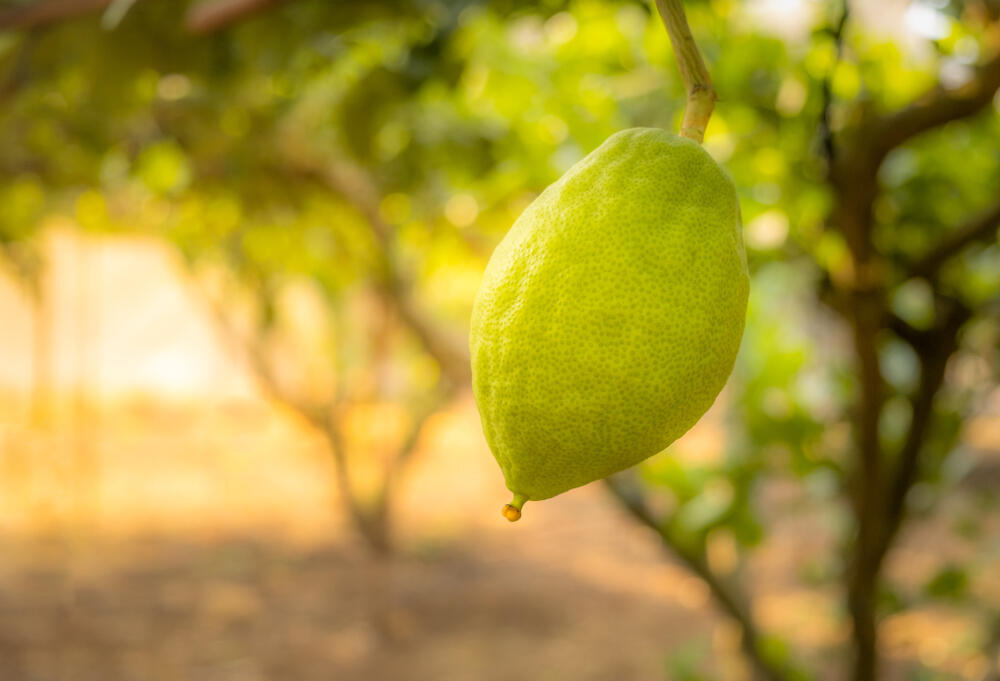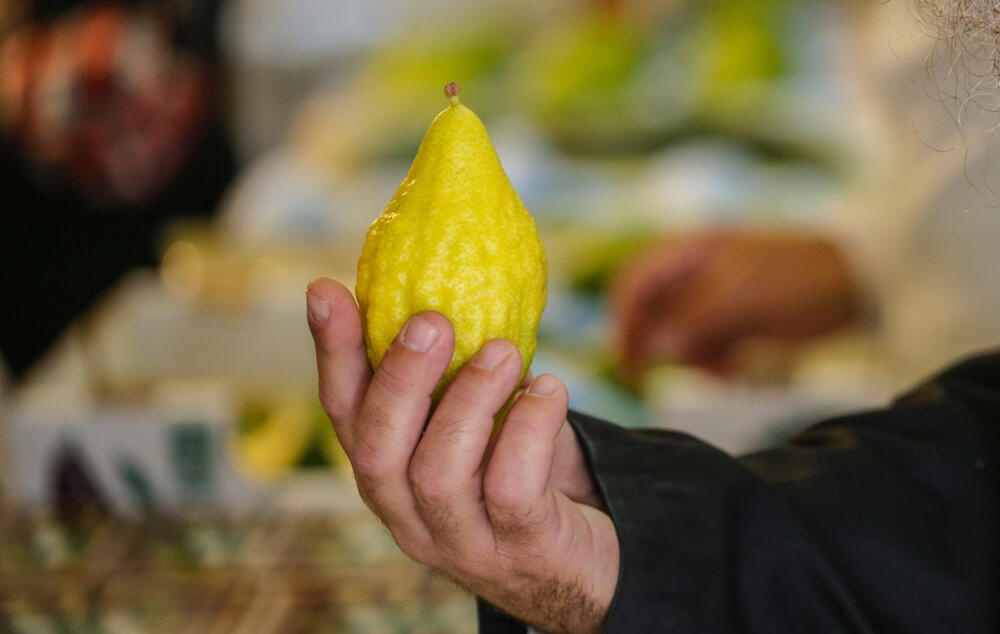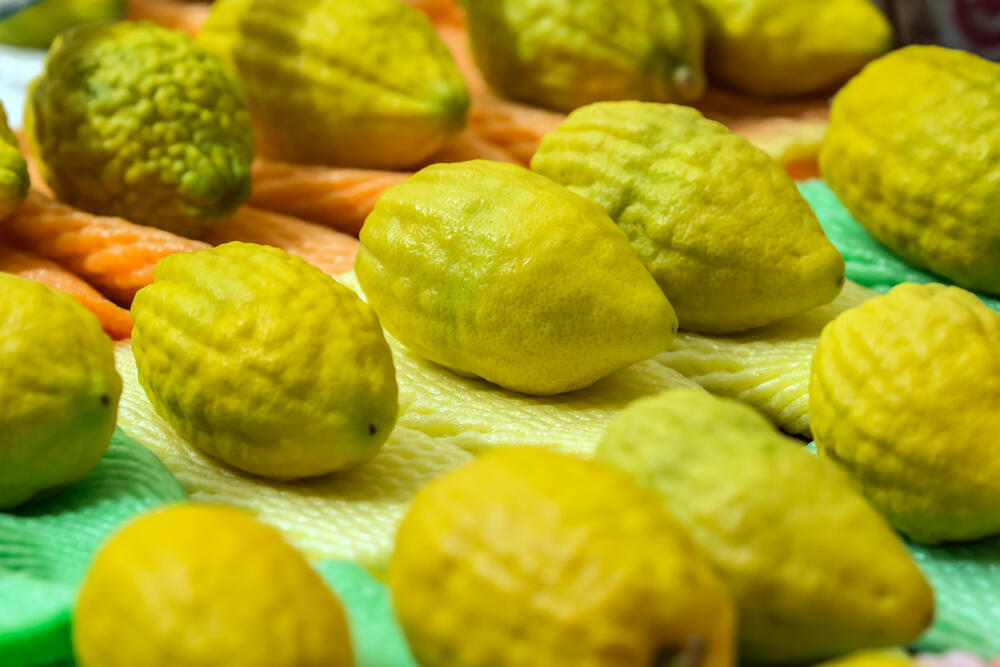Getting your Trinity Audio player ready...
The rising global temperatures are currently endangering the etrog’s (citron) growing environment, and as long as temperatures in Israel continue to rise, the possibility of growing them in Israel may become impossible.
More stories:
Etrog cultivation in Israel covers approximately 2,500 dunams and is entirely dedicated to market for the Four Species used in Jewish ceremonies celebrating Sukkot. Israel began importing etrogim in 2008 when thousands of citrons were imported from Italy. Simultaneously, there have been annual attempts to smuggle these fruits into the country prior to the High Holidays.
With the increasing demand for certain species of etrogim, Israel's Agriculture Ministry allowed the import of etrogim from Morocco in 2013, a trend that continued in 2022.
Local farmers are concerned about the increasing import of etrogim from the North African country due to the Finance Ministry's reform to reduce customs duties on imported fruits and vegetables. However, the escalating heatwaves in recent years may pose a future threat to the industry throughout the world.
Arrival of the etrog in Israel
The commandment of taking the Four Species is given in the Torah, and they are referred to as pri hadar (citrus fruit). “Unlike the other three species, we do not know exactly what this fruit was exactly,” Dr. Nir Carmi, the Volcani Center’s head of citrus fruit development, explained.
Carmi says the etrog arrived in Israel about 2,500 years ago, with the Babylonian exile, and in the days of the Second Temple it was referred to as the fruit of Babylon. Although its origin is in India, it reached Persia, which conquered Babylon, and from there, it came to Persia and subsequently to Israel with the returning Babylonian exiles.
Since then, the bitter fruit has taken its place as a major part of celebrating Sukkot. The price of a particularly well-grown etrog can reach 500 shekels (bout $130).
The etrog’s future goes hand in hand with those of other citrus fruits. Citrus fruits we know today, such as lemons and oranges, are essentially natural or artificial hybrids between the four ancestral species of citrus trees: the etrog (Citrus medica), mandarin (Citrus reticulata), pomelo (Citrus maxima), and papeda (Citrus micrantha).
“Common citrus fruits that we are familiar with today arrived in the Mediterranean Basin and Israel with the Portuguese about 500 years ago during the Age of Exploration,” Carmi explained.
“After the Ottoman Empire captured Constantinople in the 15th century, the land route, which had been the main trade route between Europe and the East, was closed. Another route was needed, so the sea was the natural second option," he added.
During those days, many who sailed the seas suffered from scurvy, a severe disease caused by a lack of vitamin C. "The Portuguese who sailed to Africa understood that there was something beneficial in citrus fruits - because those who ate them recovered from the disease. The fruits were then also distributed through these new trade routes,” according to Carmi.
The end of citrus cultivation?
Today, citrus fruits that have become an integral part of our diet, including the etrog, may be in danger. According to researchers in Spain, the global temperature rise resulting from climate change is altering environmental conditions and leading to extreme weather events such as floods, heatwaves and storms, which affect the growth of citrus trees and threaten their survival.
The Spanish study indicates that the optimal temperature range for growing citrus trees is between 22°C-34 °C. During heatwaves, however, temperatures can rise significantly higher. For example, in Morocco, from where Israel imports many etrogs, temperatures in August were measured at over 50°C.
Fortunately, the heatwave didn’t harm the growth of citrus trees since it occurred toward the end of summer. "The flowering of citrus trees occurs in the spring, the fruits grow during the summer, and their peel remains green. The ripening happens in the winter, and their peel turns orange or yellow," Carmi explained.
"If a heatwave takes place during the flowering season, it can cause the flowers to wither. So, if temperatures continue to rise, and heatwaves occur earlier in the year – the threat to these fruits will become high,” he warned.
Furthermore, in places that are warming more rapidly, such as the Middle East, increased water pumping from aquifers (subterranean water reservoirs) can lead to a significant amount of seawater entering the ground. Citrus trees need plenty of water, and when irrigated with more saline water, it increases salt levels in the soil, which affects growth negatively.
High temperatures and water scarcity also contribute to an increase in the fruits’ acidity. Additionally, they impact fruit setting and growth. It also inhibits ovule fertilization in the plant and lead to early-developed fruit to drop, resulting in a decrease in yield.
Another problem that farmers need to deal with right now is that severe summer heatwaves also affect the fruit’s color, making them harder to sell. "The color change of citrus fruits from green to orange or yellow depends on temperature and requires cool periods," Carmi said.
"In our region, heatwaves cause the fruit's internal ripening to precede and become ripe while the fruit is still colored green. Thus, the internal ripening and external color don’t happen at the same time – something that can affect the ability to sell the fruits."
According to Carmi, this issue can be solved with the use of ethylene gas, which accelerates the color change of the peel – but it's not necessarily the optimal solution as it doesn't work well with all citrus varieties and requires time and financial investment.
In the past two decades, Israel has seen a significant trend of citrus orchards being abandoned due to economic unfeasibility, alongside a general decline in the number of farmers and the scope of Israeli agriculture.
According to Carmi, citrus is a highly disease-sensitive crop, making it difficult to cultivate in general. When combined with rising temperatures, it is likely that in the future it will be impossible to expand citrus cultivation in Israel. Instead, its cultivation may shift to more northern regions.
"The modern issues are relatively minor and don’t pose an existential threat to citrus fruits. However, we’re concerned that should global warming intensify and heatwaves start taking place during flowering season, a real threat may come to citrus agricultural cultivation in Israel,” Carmi said.





